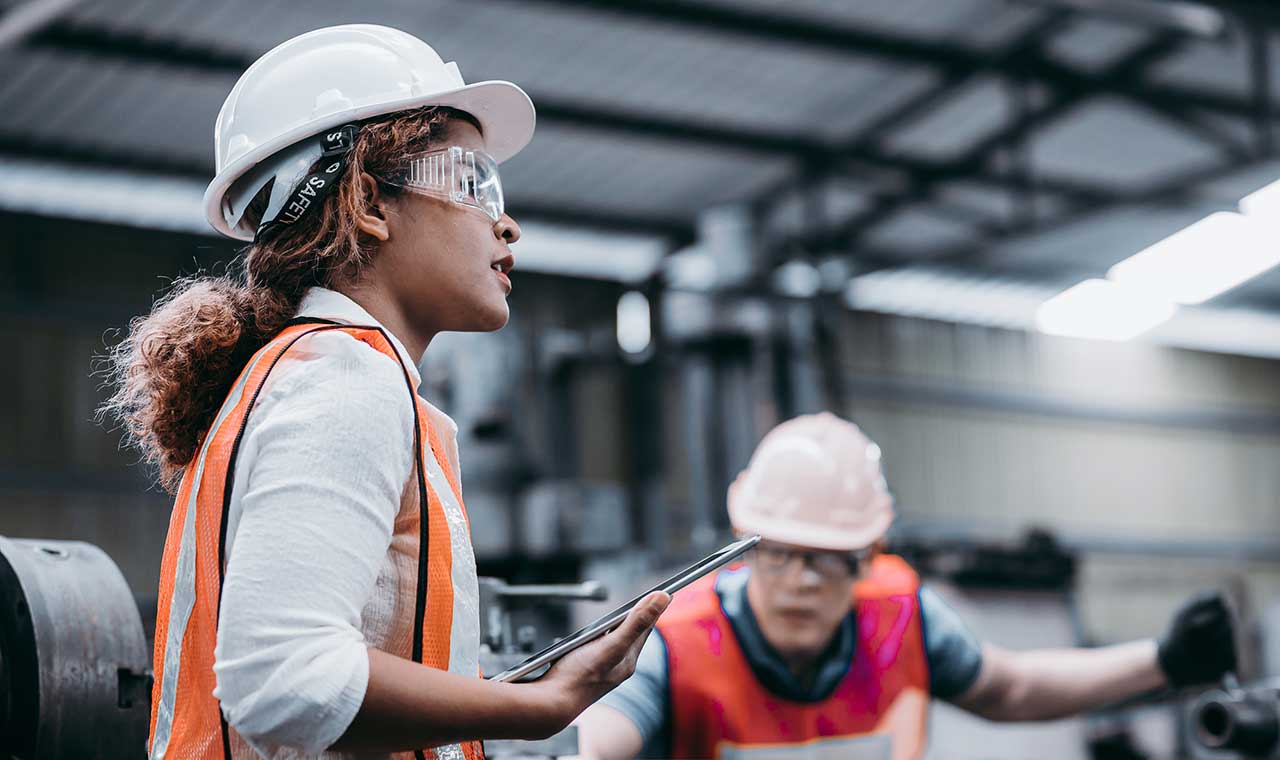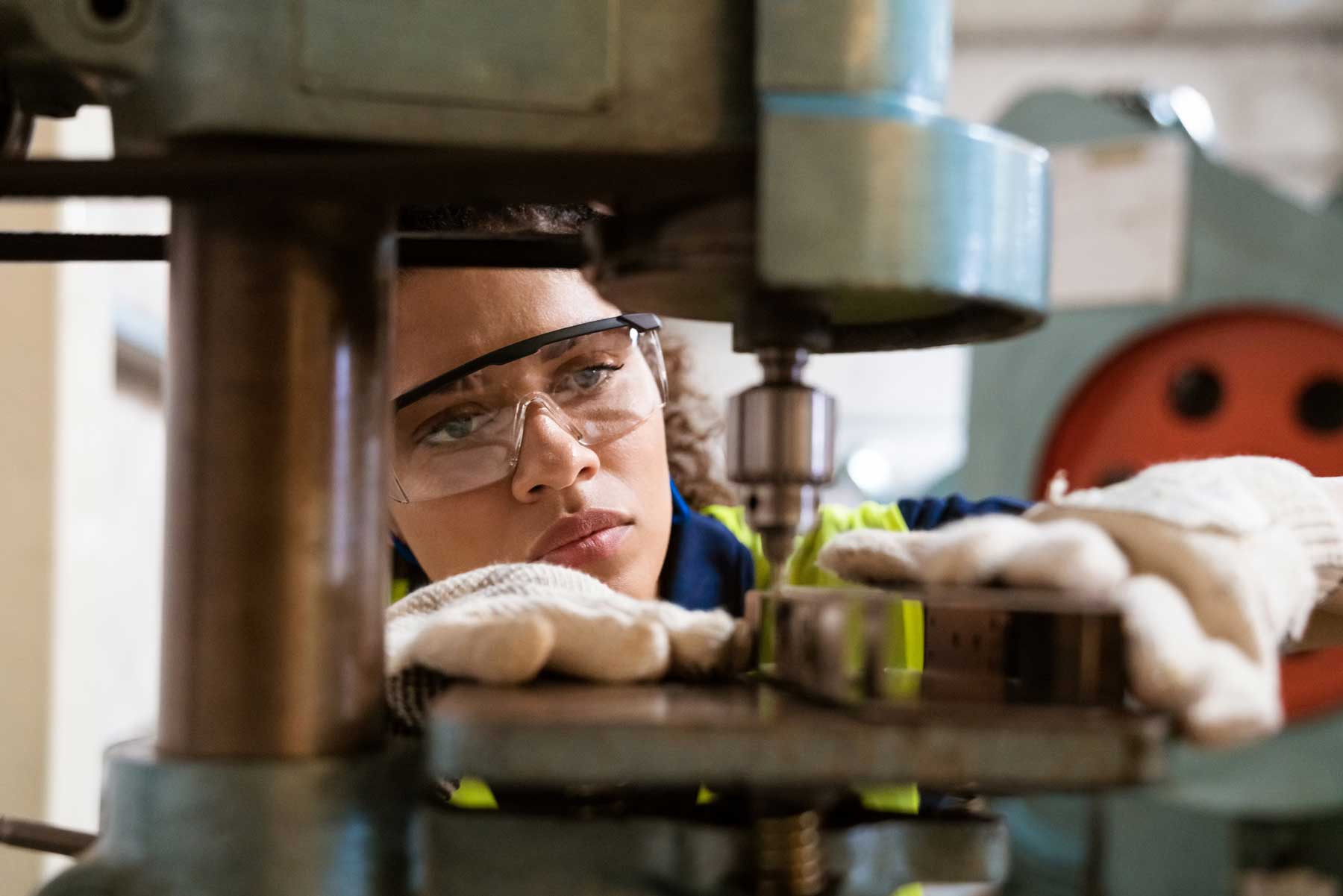- Industrial Supplies
- Coating & Finishing Systems
- Compressed Air Systems
- Assembly Tools
- Industries Served
- Aerospace & Defense
- Automotive & Specialty Vehicles
- Cannabis
- Construction & General Contracting
- Countertop Fabrication & Installation
- Food Processing
- Healthcare & Medical
- Logistics & Distribution
- Manufactured Building & Housing
- Manufacturing
- Metal Fabrication & Steel Works
- Millwork, Cabinetry, & Woodwork
- Packaging
- Pallets & Containers
- Plastics
- School Systems & Universities
- Signage
- Signs & Displays
- Textiles & Nonwovens
- Window & Door Installation
Top challenges facing the metal fabrication industry
The metal fabrication industry is going through numerous changes quickly. Technology is evolving, customer demands are changing, and new materials are being requested. At the same time, there is a lack of skilled workers and fewer raw materials available.
The obstacles are seemingly infinite, but this is a resilient industry. To help prepare for the future, here are the main challenges facing the metal fabrication industry…
Rising costs
Although the issue of rising costs is universal, inflation is having a significant impact on this industry. As consumers know, the cost of raw materials is increasing. In the fourth quarter of 2015, for instance, the price of iron ore was about $48 per ton. It rose to more than $87 in 2019. In 2021 it skyrocketed to nearly $200! The price is down from that high mark, thanks to inflation reduction measures, but is still more than $100.
Demand for customization

Consumers are demanding faster delivery speeds for their metal products and expect complete customization. A successful metal manufacturer strives to meet these demands, no matter how difficult. These customizations and specializations require estimates and quotes. Not only is the product more expensive already with these customizations, but added labor (including the estimates themselves) adds to the cost.
Customization also creates an issue for inventory. In an attempt to leverage lower prices, a shop may purchase a bulk supply of materials. These materials may be useless if a customer demands customized metal products.
Dealing with customization and finding that balance between efficiency and customization demands can be a major issue for metal fabricators.
Limited supply
The pandemic created a significant barrier in the supply chain, which metal fabricators (and manufacturers of all types) are still recovering from. But it’s not just the pandemic, which (as of this writing) started over four years ago; it’s also issues with transportation labor and staff shortages.
There is also a lack of machinery, as machine manufacturers and assembly lines are struggling to create output. Used machinery has become increasingly popular, although this creates obvious concerns for manufacturers who can’t afford a shutdown.
Meeting sustainability expectations
According to McKinsey & Company, “the steel industry is among the three biggest producers of carbon dioxide.” With steel produced in a relatively small number of select locations, it’s a prime candidate for decarbonization. There is demand from both governments and consumers for carbon-friendly metal products, but reducing the overall footprint is not easy.
“Green metal” is mostly achieved by using renewable energy in the manufacturing process. Wind, solar, and hydroelectric power can all make metal fabrication less impactful on the environment, but implementing these changes has a cost. Metal fabricators must weigh the benefits, including the potential for higher sales and lower long-term costs, against the high initial price.
Workforce shortage

No matter the industry, sector, or specific role, there is a shortage of labor. It’s impacting technology, healthcare, transportation, retail, food service, and yes — metal fabrication. There simply aren’t enough CNC operators, machining specialists, and general laborers to meet industry demands. This has led to delays, shortages, missed orders, and an overall sluggishness to the industry as a whole.
To address this problem, people within the industry have made changes and launched new initiatives. One of the biggest efforts is to work with community colleges that can train and educate future metal workers. Community colleges, trade schools, and now high schools are also positioned to attract new operators, increasing the potential job pool.
This is, admittedly, a problem that has been ongoing for years, even decades, but that doesn’t mean it will just fade away. The effort to address workforce shortages must continue. Much like paying the energy bill, investing in the future workforce is now a fundamental part of doing business in the metal fabrication industry.
Adopting and training for technology
Technology is pervasive throughout every industry. In metal manufacturing, successful, competitive fabrication means integrating advanced technology and making it part of everyday operations. It’s no longer a luxury; technology is a must.
The specific technology varies, but it often starts with high-quality, thorough data that can be used to make better purchasing, fabrication, sales, and marketing decisions. Deep-learning AI programs, which integrate robotics into the system and can perform basic tasks like cutting and welding, will be useful for profitability. Even when they are produced in high volume, products fabricated by robots are precise and durable.
Automation will be used to drive efficiency and reduce costs. Companies need to quickly adopt this technology and train their staff to work with these complex yet time-saving machines.
Reduced efficiency, same demand

Earlier, we discussed how customization is in demand, but customers also expect rapid efficiency. Unfortunately, there is an overall reduction in efficiency, caused by many of the factors we have already discussed, including workforce shortages, supply chain issues, and the need for technology training and adoption.
Customers have become accustomed to rapid delivery, but that is no longer the case. A report from The Logic Factory says that the average copper pipeline project has decreased in size by 30%. And yet, the time to market is 15% longer. Smaller orders, more time to complete. This is just one example of how production in metal fabrication and construction has become less efficient.
Demand for lightweight metals
The aerospace and automotive industries, two critical sectors for metal fabrication companies, are demanding more lightweight metals, including aluminum, titanium, and magnesium. These metals have become popular for modern transportation, aviation, and aerospace vehicles, thanks to their strength, durability, and lightweight profile.
This, too, is an ongoing problem. In 2009 there was a demand for roughly 18.7 billion tons of aluminum, according to the Aluminum Association. By 2018, this demand peaked at 28.1 billion tons. Although it dipped, it was still at 26.3 billion in 2021.
Finding material, bringing it into a facility, and meeting the demands of customers who meet lightweight metals, will continue to be an issue for metal fabricators at home and abroad.
Help for fabrication companies
Metal fabrication companies require the right tools, abrasives, adhesives, tapes, and more. Elevated provides a wide variety of readily available industrial supplies for trusted brands. We also offer coating and finishing as well as assembly tools. Plus, we have compressed air systems and services for companies in western Ohio, eastern Michigan, and South Carolina. But it’s more than just having a supply of superior products from trusted brands, Elevated has the expertise to help you meet your goals. We’re there to ensure you’re reducing overall costs, improving quality, increasing safety, and saving time.
-
 December 2, 2014
December 2, 20147 deadly sins of compressed air
When putting together a compressed air system, temptation is all around you. You want the best system, but having the best doesn’t mean grabbing w… -
 January 8, 2015
January 8, 2015Get your compressors ready after the holidays
The holidays are over and for many plants that mean seasonal shutdowns or lower production demands are also a thing of the past. While everyone is… -
 February 4, 2015
February 4, 2015Don’t get fooled – go with the real deal (Kaeser and dealer expertise)
We’ve all been there. I would wager we’ve all done it. When it comes time to get an oil change or replace our windshield wipers, we want to go for…